Backlinks are celebrated as champions of linking strategy in SEO and they should be as they are valuable vouchers of the integrity of a website. However, there is an unsung hero of the linking world that nearly doesn’t get enough limelight: Internal links.
Internal links can be found within a website with more than one page. It is an essential on-page SEO strategy that makes your marketing campaign successful. Any SEO campaign cannot be victorious without regularly optimizing your internal link. Internal linking also makes it easier for search engines to crawl the website and rank it better.
Suppose you’ve a build a website of five or six pages and you did not link it internally. When the Google bot comes to your indexed page, because you have not linked the webpages on your website internally, the indexed page won’t pass the link authority to another page, thus making it difficult for search engines to form a relation between different pages of the website. Apart from that, it will also hamper the user experience as relevant internal links keep the users busy, making them spend more time on your website. If all the pages on the website are jumbled and not sorted and linked to one another properly, users cannot jump from one page to another. This problem will become more complicated for websites with many pages. See the image below.
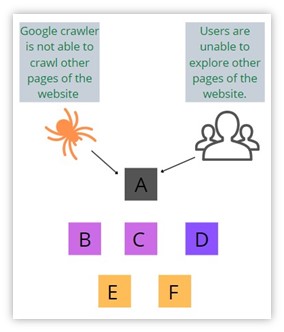
Therefore, search engines came up with the idea of internal linking to make your website organized and relate all pages & services so that users and search engines can easily navigate through it.
In this blog, we will discuss internal linking, the difference between internal and external links, the importance of internal linking, how to do internal linking strategically and what wrong practices you should avoid while doing internal linking. Let’s start!
What is internal linking?
Internal links are the hyperlinks that point to other pages within the same domain. Internal linking strategy is a part of an overall SEO strategy in which you add hyperlinks to the relevant anchor texts to send users to find more useful content on your website. It is an essential part of your link-building strategy. It helps users easily navigate through your website and sends search engine crawlers to find & index all the pages of the website. Adding the relevant internal links signals the search engines about:
• Page relevance
• Relationship between pages
• Value of pages
In the image below, you can see that the highlighted anchor text is the example of an internal link that refers to the blog page within the same website which is OutsourceSEM.
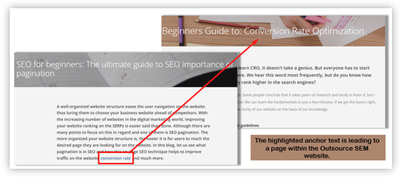
Websites that contain more than one web page should be internally linked in order to build a strong on-page SEO strategy.
External links vs Internal links - External links are those which point to a webpage that exists on a different domain. It is also a part of link building strategy that is used to back up any statement, data, facts, etc. For example, the link to OutsourceSEM SEO services is an internal link on the OutsourceSEM website. But the link that directs to another website from an anchor on OutsourceSEM is an external link, like Google's blog. Internal links are mostly used to ease the navigation on the website and send visitors to other pages, that may be useful for them, within the domain.
Why internal linking in SEO is important?
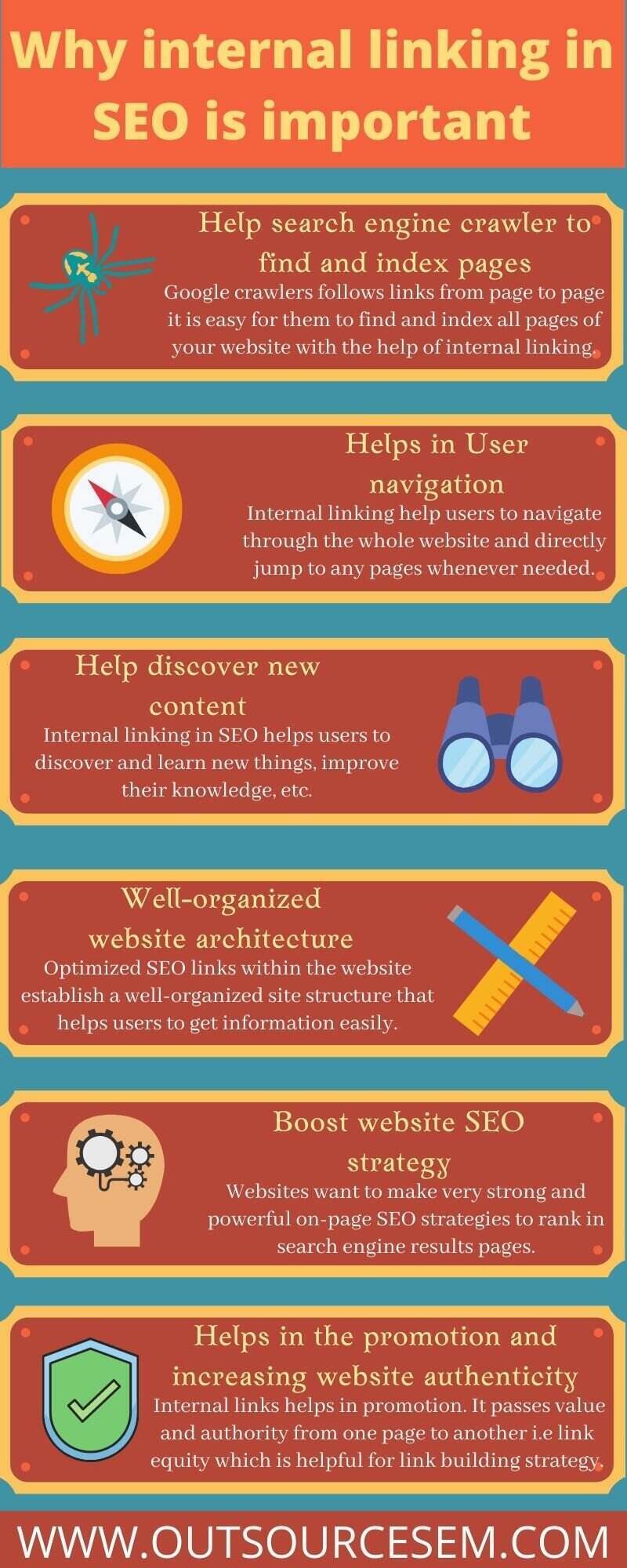
Internal links help a lot in making an SEO website. It establishes a relationship between the two pages of your site. You can create SEO links within your web pages and establish a strong bond between them which also help the search engine crawlers to get from one page to another, thus, improving ranking in SERPs.
Web owners are often so focused on enhancing other SEO ranking factors in search engine result pages that they neglect the internal linking and lose its benefits and advantages. Following are some points describing the importance of internal linking in SEO:
• Help search engine crawlers to find and index pages - No matter how nicely you optimize your web pages, promote and follow a better SEO plan & strategy, if it is not indexed by Google crawler, it will not get a ranking in the SERPs. Internal linking makes it easier for Google bots to find your pages as it creates a relationship between all the pages of a website. Google crawler follows links from page to page, it is easy for them to find and index all pages of your website one by one. It will also tell search engines about the important pages of your website and the content included in it. Benefits of good internal linking include crawlable site, easy indexing, ranking by search engines, etc. It also helps search engines to understand the architecture of the website.
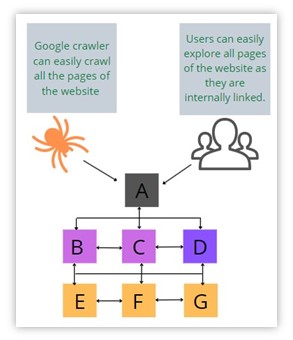
• Helps in user navigation - Internal linking is a beneficial on-page SEO strategy for improving user experience. It allows users to navigate through the whole website and directly jump to any pages whenever needed which homepage is the most common. Optimized internal links in SEO increase the average time users spend on your website if they find useful and relevant internal links on the page. This SEO strategy is very useful for e-commerce websites in which they can internally link popular products of their website, which helps in getting potential customers that increase the user engagement on the website and then conversion rate. For these reasons, on-page SEO links help in building user experience.
• Help discover new content - When users visit a website, they need services or information about a particular subject. Internal linking in SEO helps users discover and learn new information and improve their knowledge, etc. The content on your website should have been high-quality that adds value to users and helps them learn or discover the things they are looking for. If users find the content on your website useful, they automatically prefer your services and readings, which increases the engagement time of users and boosts your link-building strategy.
• Well-organized website architecture - Search engines, as well as users, do not like unorganized website architecture. This makes them confused and leaves them with a bad user experience. Optimized SEO links within the website establish a well-organized site structure that helps users to get information easily. It also makes it easy for Google to crawl your website.
Orphan pages are the pages that are not linked to any other pages on your website. These are mostly campaign pages that have one-time use, e.g.: to display limited period offers, etc. Such pages maybe linked to other important pages on your website and the Googlebot might end up crawling them which would waste the crawl budget. To avoid this, these pages should not be included in the sitemap or should be blocked by robots.txt from crawling and indexing. Thus, create an internal link strategy that includes all the pages of your website so that it can be appropriately indexed and block orphan pages from being crawled.
• Boost website SEO strategy - Website owners want to make strong on-page SEO strategies to rank in search engine result pages. Link-building techniques, whether external or internal, help build a strategy that really works to enhance your website ranking. It also signals search engines about the important web pages of your website and the content included in it with the help of relevant anchor texts.
As you’ve learned above, internal linking in SEO enhances user experience, helps search engines in finding and indexing pages, boosts engagement rate, authenticity, organizing website, drives traffic and increases CTR, etc.; these factors help a lot in making an SEO website and boost your link building strategy.

• Helps in the promotion and increasing website authenticity - Internal linking helps enhance the authenticity of your website. Internal SEO links pass authenticity from one page to another. One of the main benefits of internal linking is you can promote your products, services or content with the help of this link-building technique.
Suppose you are talking about keyword research and you provide this service and have an SEO keyword research services page or you have blogs written on keyword research that describe it in detail, you can internally link to these blogs or services pages so that users gain extra information or get your services if they need them. The benefit of this strategy is you can promote your services and content. One more advantage is that it passes value and authority from one page to another i.e., link equity which is helpful for your link-building strategy.
Internal linking strategies
We’ve discussed how to strengthen an on-page SEO strategy with the help of internal linking. But you should follow some strategies to gain the maximum advantage of internal linking for making your SEO website:
• Regularly crawl your website - Only adding more and more internal links to your web pages is not a good strategy. It should be audited from time to time to find broken internal links, orphan pages, various links redirected to insignificant pages, deep linked important pages or other issues with your existing internal links. You can use Ahrefs site audit tool to crawl your website to find these problems and work on them. Broken backlinks spoil the user's experience. To avoid this, use the proper format and the link on your domain. The image below shows the correct format of internal linking:

• Use descriptive and optimized anchor texts - Anchor texts play an important role in adding internal links, as well as external links, effectively. It should be descriptive so that users clearly understand where they will be taken after clicking on them. Search phrases that people commonly search on Google as these are the best to use as anchor texts. Never use the same anchors; it should have variety. It should also not be the case that many anchor texts refer to the same landing page. There should be relevancy in the anchor text and landing page. The minimum length of it should be two words and not more than one sentence because it is of no use. Phrases like click here, read here also are not good to use as anchor texts.
• Use quality and relevant links - One of the most important factors you should be careful about while internal linking using links where it is necessary; do not try to add any links forcefully. Links to high-converting pages are good for your website. It should be relevant to the anchor text and the landing page. You can relate services, products and blogs on your page with the help of links. Connect high-ranking pages of your website to other pages that you are trying to optimize and rank.
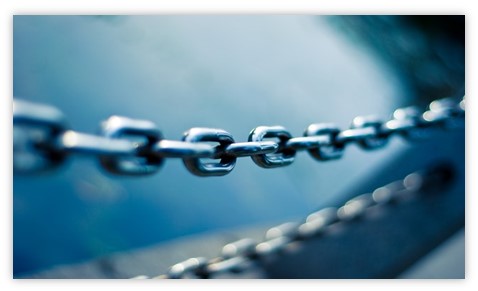
• Identify your most authoritative pages - It is essential to identify the priority and authority of your web pages. Authoritative pages have more value and backlinks from other authoritative pages help to rank in search result pages. The homepage is the most definitive and gets quality backlinks from other authorized pages of the time. As internal linking passes the authority, try to link the relevant pages and contain target keywords. This increases the authority of other pages also and generates traffic.
• Regularly post content and interlink it - It is essential to collect and organize information on your website because the more content you have, the more internal links you can add. To accumulate content on your page, you can write blogs or articles, update your products & services from time to time, add FAQ sections, describe your features, etc. Regularly update your old content with new and fresh internal links that give a sense of updated and revived content. Users and search engines both prefer content that is modernized and fresh.

• Siloing - Siloing is one of the main strategies that build your site architecture via internal linking. Many websites do not have well-organized designs and are structured illogically. Siloing helps to solve this problem. It refers to the grouping of the web pages that contain a related topic. This creates a topic cluster or content hub, which is a group of interlinked pages all closely related to the same topic. This technique eases user navigation, make it easy to crawl for search engines and transfers more authority between pages.
Mistakes to avoid while internal linking
Even after doing everything, some mistakes might ruin your whole internal link-building strategy. While doing internal linking, be careful about the user experience, so do not add too many links on the homepage or any other page, i.e., count on over-optimizing your internal links. Also, Google crawlers can crawl only 150 links on a page, including the header and footer menu, so adding hundreds or thousands of links is of no use.
Check that links that redirect to pages do not contain NOINDEX tags and are not blocked by meta robots or robots.txt. Replace or remove all broken backlinks and avoid 404 errors that point to pages that do not exist on any domain. Do not deep link important pages; try to keep it close to the homepage, accessible by one or two clicks. Also, consider and fix orphan pages. Make sure it should be interlinked with your web pages. Look for any unimportant orphan page ranking by Google that should be blocked using the NOINDEX tag or robots.txt. Irrelevant & single-word anchor text and keyword stuffing are some mistakes that need to be corrected; otherwise, they should reduce the quality of your web page.

Conclusion
Internal linking in SEO is a good digital marketing strategy to follow that helps in boosting your website performance, driving traffic, increasing clickthrough rate, etc. It is the core part of your link-building strategy. It is good practice to add internal links in your content where it goes right. Facts that are included in the content should be backed up by internal links or external links. Also, it increases your authority and works as evidence. Keep the proper format while linking to avoid any errors.
Internal linking plays a vital role in organizing the website content and pages. So, it should be done properly as it is essential for your SEO. You can also contact and take help from an SEO expert or company that provides SEO services to enhance your website's overall performance. If you are a home services provider looking to improve your online visibility and attract more customers? Our comprehensive SEO services include painting SEO, plumbing SEO, construction SEO, appliance repair SEO, and HVAC SEO. With our effective SEO strategy, we focus on optimizing your digital presence to boost search engine rankings, drive organic traffic, and generate qualified leads in the painting, plumbing, construction, appliance repair, and HVAC industries.
References
• Internal Links
• Internal Links: A Guide to Building a Strategy that Works
• Internal Links for SEO: An actionable guide
